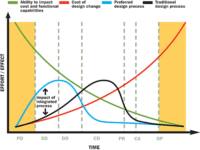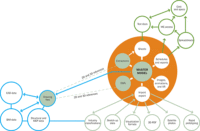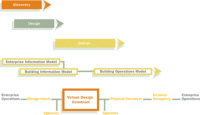Integrated practice in perspective: A new model for the architectural profession, part 4
The inefficiencies inherent in the process of design and construction are necessitating a shift to greater multidisciplinary collaboration and information sharing among project team members
Will using integrated practice challenge intellectual property norms?
One question on many minds is whether the advent of integrated practice, with building information modeling as a primary tool for facilitating it, will change customs regarding copyright of information and intellectual property. In other words, who owns the data? According to Volker Mueller, Assoc. AIA, design technology manager at NBBJ, “Authorship of BIM is analogous to authorship of other construction documents. Every discipline authors their scope of work.” That seems simple enough. Consultants retain ownership of the data they plug into the model.
But some confusion exists because of persistent misunderstandings about what a BIM model really is. Davis Chauviere, principal and C.I.O. of HKS, says, “It is important to understand, in absolutely no software being used today is there a single model if the project is done by multiple firms using BIM. Consultants create their own models that are referenced into the architectural model just as they do with drawings. There is absolutely no problem keeping track of who authored what.”
Tom Owens, principal and general counsel for NBBJ, adds, “To date, we have always had to extract traditional, two-dimensional prints from the model for someone on the project team or the jurisdictional authorities involved. When two-dimensional prints are extracted as the official ‘contract documents’ from the model, the model is no longer a ‘contract document.’ The difference lies with the new authors who might be involved in the model. If more folks contribute, including folks who don’t have a contractual agreement regarding copyright, then the copyright ownership gets messy.”
So, for now, the small proportion of firms who use BIM for contract documents adopt the same procedures that protect two-dimensional drawings. An architect registers design documents for copyright, including all the engineering work supporting them, and may protect them with a digital signature. Architects and lawyers say that engineers and other specialists provide data into a three-dimensional model as part of a general contract and don’t try to own it. NBBJ may be slightly different in this respect. “We encourage consulting engineers to retain ownership, but to give us a license so that we may in turn license the work to the client.”
And, undoubtedly, clients state in their RFPs that they expect to be provided with the rich data yielded by the BIM model and to be able to use it to run their facilities. This superior work product is, after all, a key reason firms are migrating to the software. But will owners repurpose or modify the copyrighted material? Chauviere says the same issues came up 20 years ago, when firms started to migrate to CAD. “The concerns are more about being indemnified from improper use of the data than the actual release or compensation. Not wanting to lose the job over something that is created as a natural artifact of our services, our firm will almost always release the data.”



